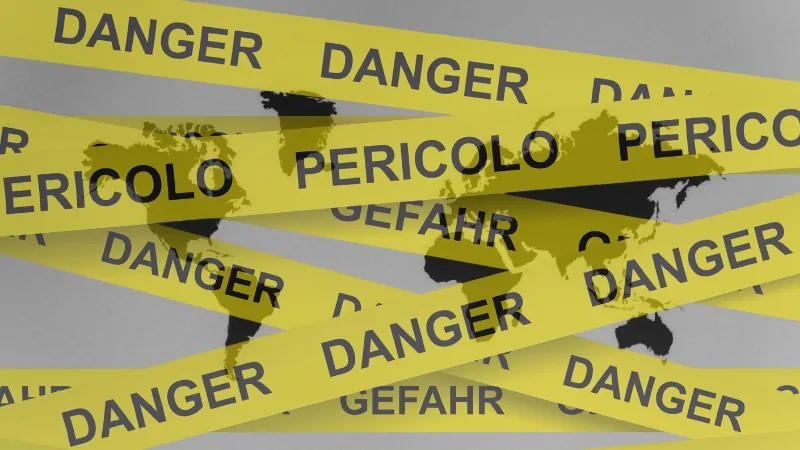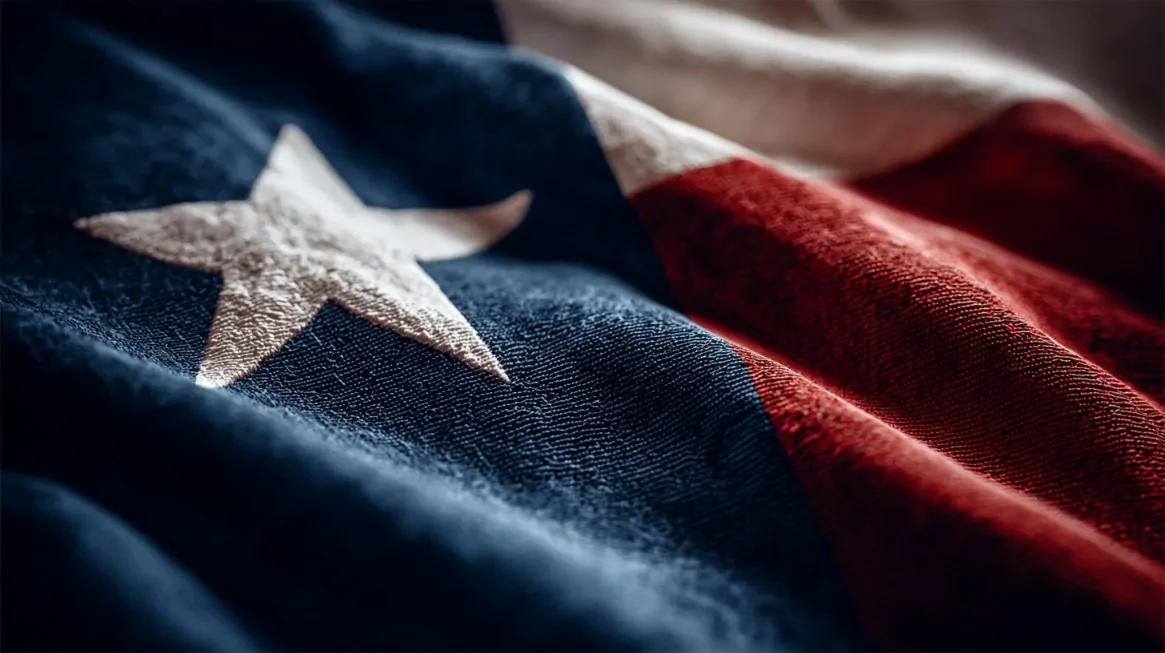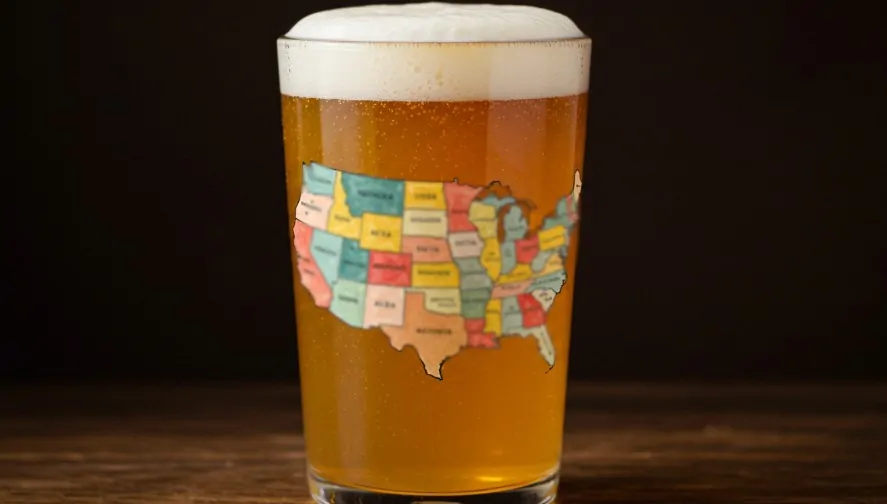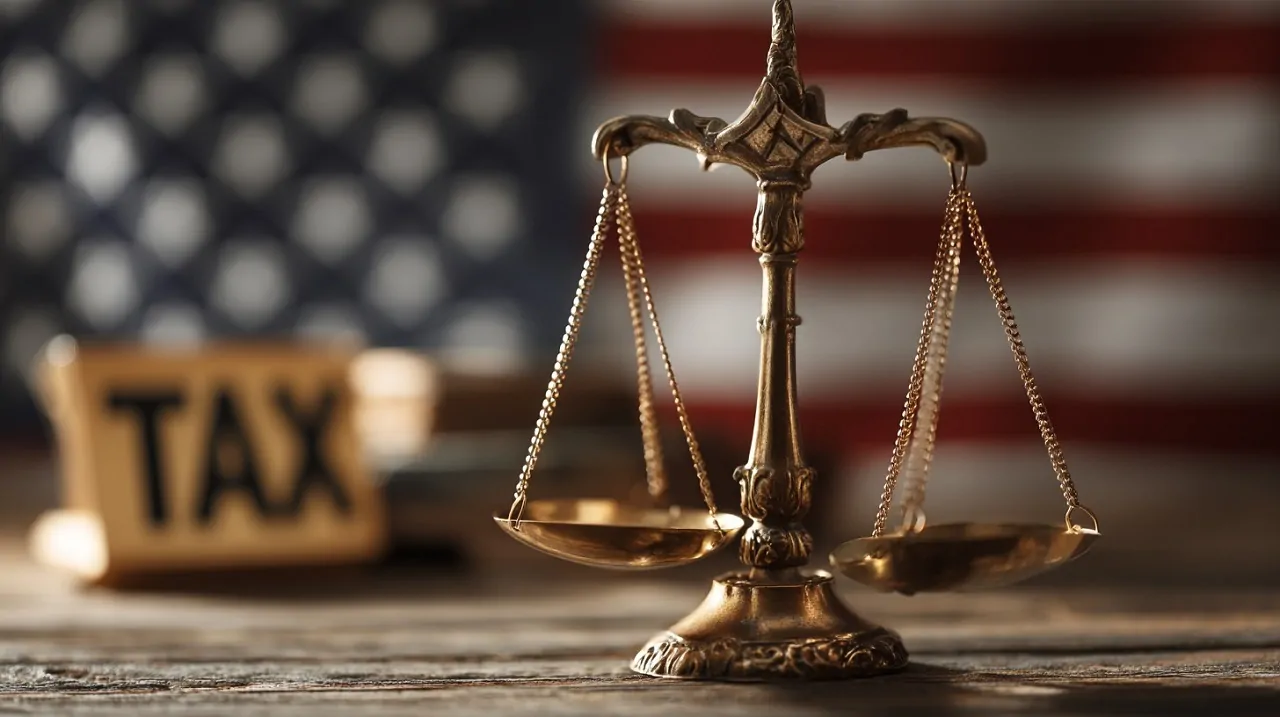Some cities carry a shadow that never lifts. Streets echo with gunfire, neighborhoods fall to cartels, and entire communities live each day knowing danger could strike at any moment.
For millions, fear has become part of daily life. In the most dangerous cities in the world, safety is a luxury, not a guarantee.
Drug wars, political corruption, and deep poverty have carved out zones where the law no longer rules. Police forces stand down. Gangs fill the void. Families grieve in silence.
Tourists wander into places where even locals stay behind locked doors after sunset. Violence is not hidden. It is open, constant, and merciless.
These are the most dangerous cities in 2025.
Rank
City
Country
Homicide Rate (per 100,000)
1
Ciudad Obregón
Mexico
138
2
Tijuana
Mexico
134
3
Caracas
Venezuela
122
4
Tegucigalpa
Honduras
102.2
5
Ciudad Victoria
Mexico
86
6
Ciudad Juárez
Mexico
77.4
7
Natal
Brazil
75.59
8
Belém
Brazil
71.4
9
Fortaleza
Brazil
69.15
10
Feira de Santana
Brazil
67.46
11
Salvador
Brazil
66.4
12
Cape Town
South Africa
63.00
13
Cumaná
Venezuela
62
14
Kingston
Jamaica
54.46
15
Memphis
USA
50.9
16
Cali
Colombia
49.6
17
St. Louis
USA
48.6
18
Guatemala City
Guatemala
47.80
19
Durban
South Africa
43.40
20
Port-au-Prince
Haiti
40.00+
21
Johannesburg
South Africa
37.90
22
San Juan
Puerto Rico
37.68
23
Detroit
USA
37
24
Baltimore
USA
35.2
25
New Orleans
USA
30
26
Barranquilla
Colombia
28.3
Note: Data in the table comes from multiple sources and reflects estimates reported between 2023 and early 2025. Figures may vary slightly based on reporting methods.
Sources:
Most Dangerous Cities in Mexico
Mexico holds the highest number of cities in the global crime rankings. The crisis stems from a violent drug war, weak policing, and corruption at every level. Cartels operate like shadow governments.
Police forces are either infiltrated or outgunned. Residents live through daily gun battles. Tourists stumble into chaos without warning.
Tijuana
- Homicide Rate: 134 per 100,000
- Population: Around 2.3 million
Tijuana is the bloodiest city in Mexico. It sits on the border with San Diego and has become a high-stakes turf war zone. The Sinaloa Cartel and the Jalisco New Generation Cartel fight openly for control of trafficking routes.
In 2019, Mexican police found nine bodies hanging from a bridge and seven more dismembered on a roadway in Uruapan, a brutal display linked to cartel warfare meant to terrorize rivals and assert territorial control.
Streets near nightlife districts have seen public executions. Many local businesses pay protection fees or shut down entirely.
Ciudad Obregón

- Homicide Rate: 138 per 100,000
- Population: Around 436,000
Ciudad Obregón is part of the Mexican state of Sonora, where armed groups ambush police convoys and military patrols. In mid-2023, masked gunmen attacked a government convoy with grenades and rifles, injuring several officers.
Public school teachers across the city stopped in-person classes due to extortion threats and shootings near school zones. Criminals dump bodies wrapped in tarps on sidewalks, leaving messages scrawled in black marker claiming responsibility.
Ciudad Juárez
- Homicide Rate: 77.4 per 100,000
- Population: Around 1.6 million
@rickyxleo At least 17 dead, gang leader escaped in Mexican prison break. #greenscreen #prisonriot #prisonbreak #mexico #borderpatrol #border #ciudadjuarez #juarezmexico #cbp #texas #usmexicoborder ♬ Breaking news – Synthezx
Ciudad Juárez once held the title of the world’s murder capital. It lost that spot, but the bloodshed continues. In 2022, a massacre inside the Cereso No. 3 prison ended with 17 inmates dead and cartel gunmen escaping in stolen vehicles.
The same day, coordinated shootings targeted civilians across the city, killing grocery store workers and street vendors. Gangs like Los Mexicles and La Linea now operate openly. Even inside police precincts, safety cannot be guaranteed.
Ciudad Victoria
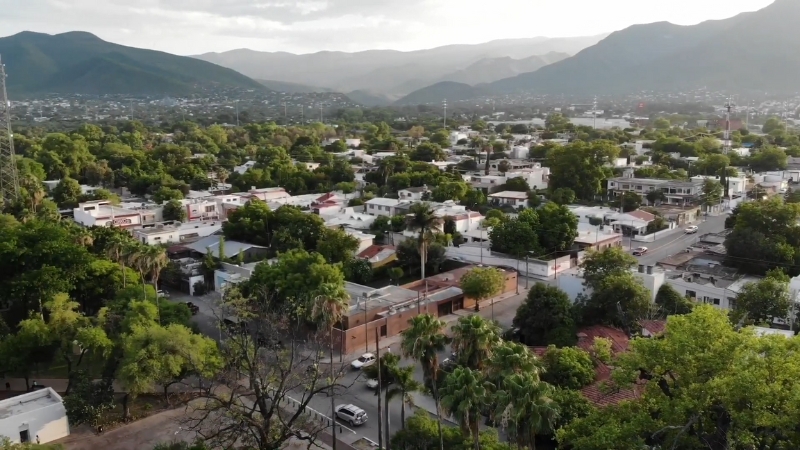
- Homicide Rate: 86 per 100,000
- Population: Around 349,000
Ciudad Victoria is the capital of Tamaulipas, a state long controlled by the Gulf Cartel and Zetas remnants. In recent years, gunmen have fired on government buildings and stormed prisons. In one incident, armed men dragged a federal judge out of his car and executed him on the sidewalk in broad daylight.
Bodies with signs of torture are regularly found near major roads, often accompanied by narco-banners with messages for rival gangs or the government. Police officers face near-daily ambushes.
Cities in Venezuela Drowning in Violence
Venezuela carries the scars of economic collapse, political breakdown, and unchecked gang warfare. The government reports a drop in homicide rates, but most experts reject the idea that safety is improving.
The decline comes from mass emigration, increased control by armed groups, and fewer formal crime reports. Police forces are often absent. Organized gangs operate like militias. In many parts of the country, violence is not punished. It is managed.
Caracas
- Homicide Rate: Around 122 per 100,000
- Population: Around 2 million
Caracas has long held a reputation as one of the most dangerous cities on Earth. Kidnappings, armed robberies, and homicides happen in broad daylight. Residents speak of neighborhoods ruled by criminal collectives who enforce their own rules.
In 2024, violence in Caracas remained a serious threat, including in the El Junquito area. On December 29, a Bolivarian National Police officer named Jonathan Andrés Angulo Madrid was shot and killed while socializing with friends in El Junquito. Authorities confirmed his death on the scene and opened an investigation. No suspects were arrested.
Cumaná
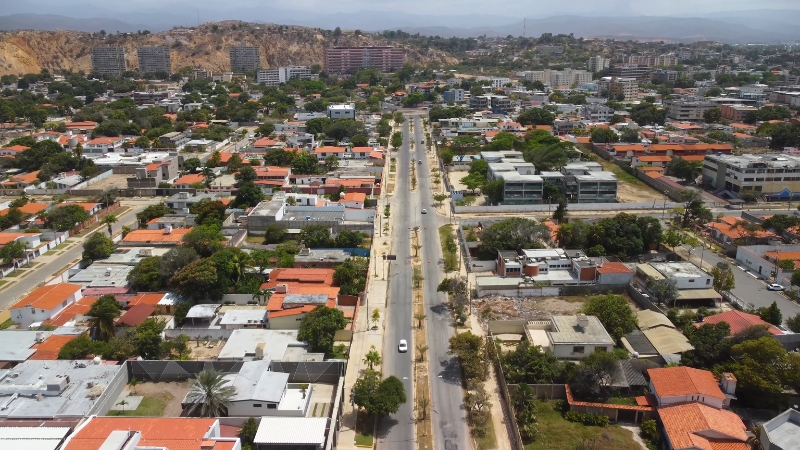
- Homicide Rate: Around 62 per 100,000
- Population: Around 400,000
Cumaná, on Venezuela’s northeastern coast, suffers from gang turf battles tied to regional drug trafficking. Shootouts often erupt near marketplaces and transport hubs. In 2016, a police operation in the Ciudad Bendita sector of La Llanada resulted in the deaths of four members of the criminal group known as “Tren de la Muerte,” following an exchange of gunfire with law enforcement.
Local residents reported that armed groups had been taxing business owners and threatening families with forced evictions. Most shops now close before sundown. Patrols by security forces are sporadic and usually limited to brief, visible appearances with no follow-through.
Brazil: Where Joy Meets the Edge of a Knife
Brazil attracts millions of visitors with its festivals, natural wonders, and rich cultural heritage. But behind the color and celebration, many cities remain trapped in a cycle of violence.
Urban crime continues to haunt daily life in large parts of the country. Drug trafficking, organized gangs, weak justice systems, and extreme inequality feed the violence.
As we could find on HurfPost, cities like Natal, Fortaleza, and Feira de Santana now report some of the highest homicide rates in the country.
Despite a national decline in homicide totals, down to just over 40,000 deaths in 2023, several cities continue to rank among the most violent in the world.
Natal
- Homicide Rate: 75.59 per 100,000
- Population: Around 900,000
Natal offers a stark contrast between its famous beaches and its deadly streets. Safety while walking alone scores very low, especially after dark. The city has become a hotspot for drug gang activity, with frequent shootouts in the Zona Norte and Alecrim areas.
Local authorities struggle to maintain order. Visitors are often warned to avoid side streets and stay inside after sunset.
Belém

- Homicide Rate: 71.4 per 100,000
- Population: Around 1.5 million
Belém’s crime index ranks among the highest in the country. In neighborhoods like Guamá and Terra Firme, gang presence is overt. Armed men walk openly through alleys and patrol territory like paramilitary units.
The police avoid certain zones unless accompanied by military support. Muggings and break-ins are rampant. For residents, daily survival depends on timing, discretion, and luck.
Fortaleza
- Homicide Rate: 69.15 per 100,000
- Population: Around 4 million
Fortaleza is close to some of Brazil’s most stunning natural attractions, but its murder rate is one of the highest in Latin America. The Barra do Ceará and Jangurussu districts see frequent police raids and street shootouts.
Gangs often extort businesses, and residents have reported armed men conducting roadblocks during turf conflicts. Despite a visible police presence in tourist zones, real control remains in the hands of rival factions.
Feira de Santana
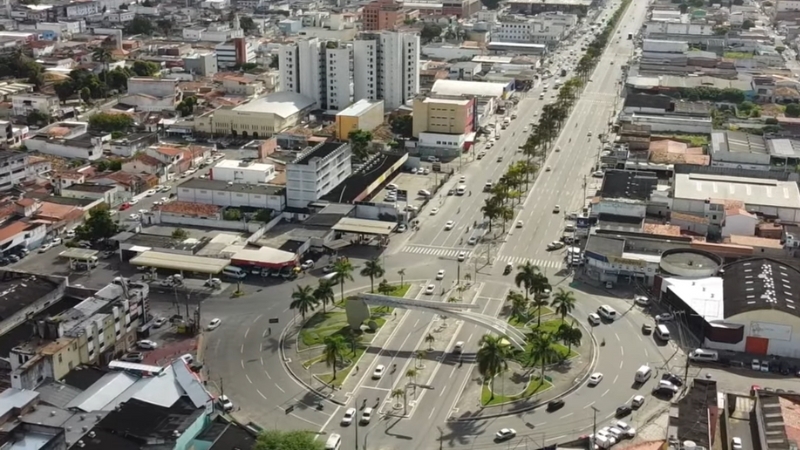
- Homicide Rate: 67.46 per 100,000
- Population: Around 620,000
Feira de Santana sits at the crossroads of multiple drug routes. That geography has turned the city into a center of violent activity. Despite being a major business and agricultural hub, its streets tell a different story.
Criminal groups control neighborhoods like Tomba and George Américo. Victims of gang extortion and robbery often stay silent.
Salvador
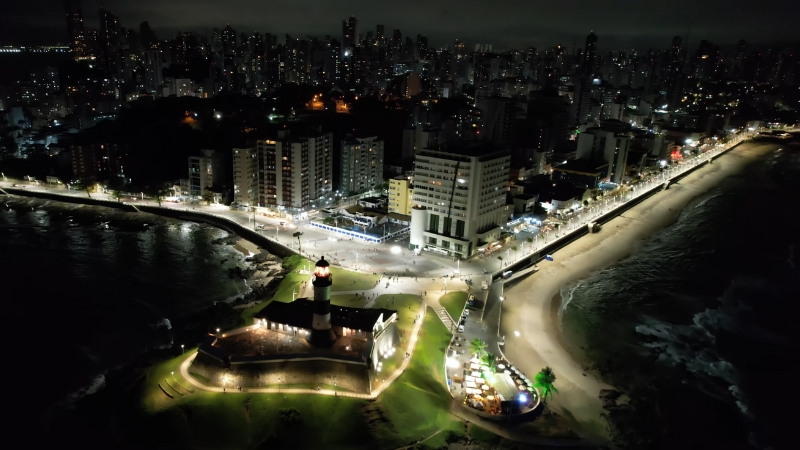
- Homicide Rate: 66.4 per 100,000
- Population: Around 2.9 million
Salvador carries a deep cultural history and was once Brazil’s capital. Now, it struggles with a legacy of crime.
Violence spikes often occur in the Subúrbio Ferroviário region. In recent months, multiple videos circulated showing armed groups exchanging fire in daylight.
Public transport services have shortened their hours. Residents regularly report home invasions, theft, and street muggings.
Colombia: Cartel Legacy in Modern Streets
Colombia no longer makes global headlines for cartel empires like it did in the 1980s and 1990s, but violent crime has not disappeared. The criminal structure changed. Instead of massive cartels, the country now faces splintered networks, regional gangs, and armed militias with territorial control.
Cities with high homicide rates today are not the same ones from past decades. Drug trafficking still drives most of the violence. Political instability and poverty keep the cycle alive. Major cities continue to carry the scars of Colombia’s past.
Cali
Restrictions on alcohol and guns in Cali, a city in Colombia, helped cut murders by 35% https://t.co/ReP2SiMAif
— The Economist (@TheEconomist) May 17, 2018
- Homicide Rate: 49.6 per 100,000
- Population: Around 2.6 million
Cali ranks as the deadliest major city in Colombia on the current global homicide index. Violence comes in waves, often tied to local drug distribution networks and gang retaliation. The Aguablanca district remains a hotspot where shootouts and targeted killings are common.
In December 2024, a motorcycle loaded with explosives detonated at a police checkpoint in Las Peñas, a community in Jamundí, near Cali, Colombia. The blast killed the driver and injured 14 others, including seven civilians and seven police officers, one of whom remained in critical condition. Police interventions rarely go deep into these territories. Informants face death threats. Despite government security operations, the murder rate remains high.
Barranquilla
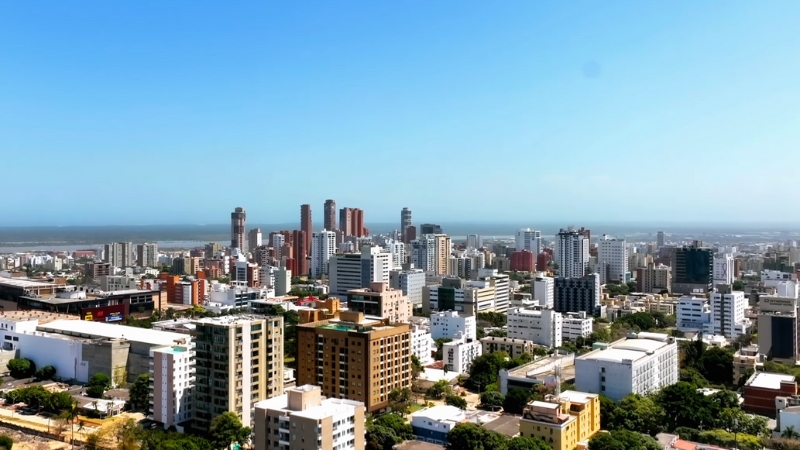
- Homicide Rate: 28.3 per 100,000
- Population: Around 1.2 million
Barranquilla is known for its carnival, but its streets now tell another story. Gangs operating out of the Las Gardenias and Rebolo neighborhoods are behind a surge in contract killings.
In early 2025, Barranquilla faced a violent surge in gang warfare driven by drug trafficking, extortion, and territorial control. Criminal groups such as Los Pepes and Los Costeños battled over illicit income, despite their top leaders—Digno José Palomino Rodríguez and Jorge Eliécer Díaz Collazos (alias Castor)—being held in prisons. The violence escalated as the Clan del Golfo allied with Los Pepes in a campaign to eliminate Los Costeños.
Cities in South Africa Gripped by Brutality
South Africa holds a unique and grim distinction—its major cities rank alongside the most dangerous in the world. Unlike many other countries on the list, the violence in South Africa is not driven by cartels. Instead, the root causes are gang warfare, poverty, collapsed urban infrastructure, and deep mistrust in law enforcement.
Shootings, stabbings, and violent robberies take place in both inner cities and townships. Homicide is not a distant threat. It is a visible, daily risk for millions.
Cape Town
VIDEO | Gun-related domestic violence has come under the spotlight at the launch of the “Removing the Trigger” campaign in Cape Town. https://t.co/6RNp0cx7Rc
— SABC News (@SABCNews) February 14, 2024
- Homicide Rate: 63.00 per 100,000
- Population: Around 464,986
Cape Town is one of South Africa’s most well-known cities, admired for its beauty, coastlines, and tourism. But outside the postcard view, communities like Manenberg and Hanover Park experience relentless gun violence.
In many zones, rival gangs fight openly for control over territory, especially in the Cape Flats. Armed attacks often target public transport and school routes. For residents in these neighborhoods, survival means avoiding certain blocks and staying indoors after dark.
Durban
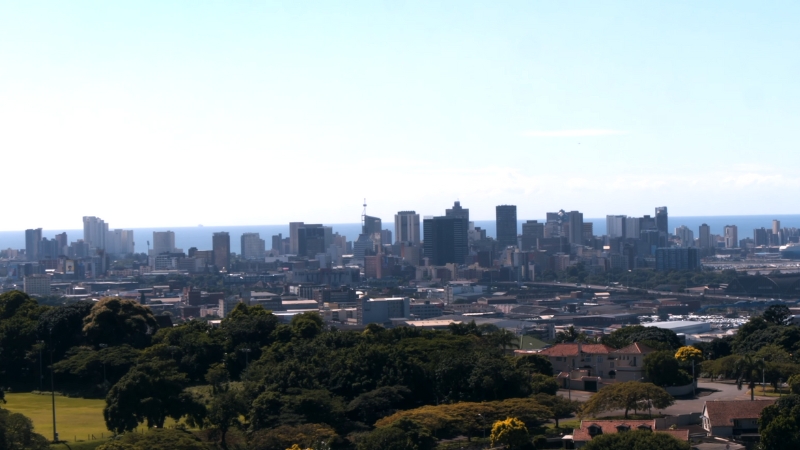
- Homicide Rate: 43.40 per 100,000
- Population: Around 3,981,205
Durban has the third-highest murder rate among South African cities. Despite being a major economic hub and port city, much of its population faces poverty and joblessness. In areas like Umlazi and Inanda, shootings and violent robberies are common.
Residents frequently report hearing gunfire at night. Police struggle to patrol consistently. Many families rely on local community leaders for safety rather than formal law enforcement.
Johannesburg
- Homicide Rate: 37.90 per 100,000
- Population: Around 5,866,550
Johannesburg is South Africa’s largest city and its financial capital. But that status does not insulate it from violence.
The homicide rate places it among the world’s most dangerous cities. Inner-city areas like Hillbrow face persistent danger, with reports of muggings, armed assaults, and killings.
Shootings linked to gang conflicts happen in residential zones and shopping areas alike. Large portions of the city operate under informal security due to a shortage of effective public policing.
A Surprising Spot for Cities from the United States
Many still think of the United States as a safe and structured nation, but several American cities continue to show homicide rates that rival cartel-dominated zones.
Violence in these places comes from deeply rooted problems—poverty, gang networks, unchecked access to firearms, and fractured public trust in law enforcement.
Memphis, Tennessee
- Homicide Rate: 50.9 per 100,000
- Population: Around 650,000
Memphis has surpassed all other large U.S. cities in overall violent crime rates. In 2024, the city logged one of the nation’s highest numbers for aggravated assault, robbery, and homicide.
Shootings are routine in neighborhoods like Frayser and Orange Mound. Police resources are stretched thin, and community groups struggle to fill the gaps.
Youth violence is rising. Many crimes go unsolved due to a lack of cooperation between law enforcement and the public.
St. Louis, Missouri
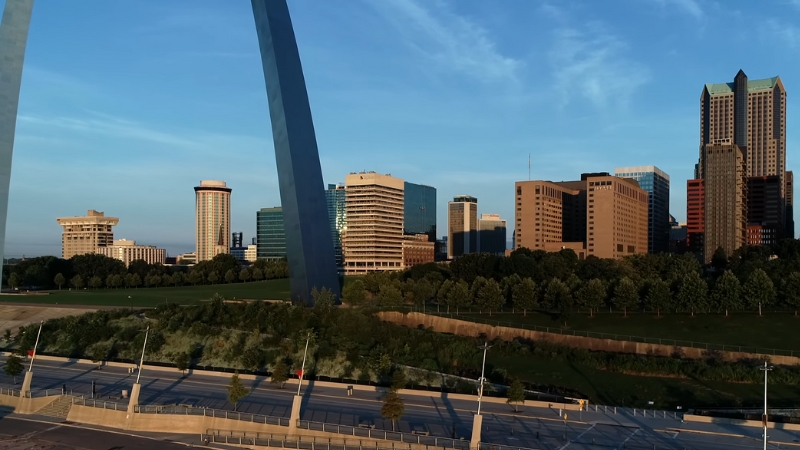
- Homicide Rate: 48.6 per 100,000
- Population: Around 300,000
St. Louis has ranked near the top of national homicide charts for over a decade. In early 2025, city officials confirmed a sharp drop in the number of murders, reporting the lowest total since 2005. That shift followed a wave of new community policing strategies.
Still, neighborhoods like Walnut Park and Dutchtown report regular shootings. Gun violence remains the leading cause of death for young men in the city. Residents continue to demand stronger protection without over-policing.
Baltimore, Maryland
- Homicide Rate: 35.2 per 100,000
- Population: Around 600,000
Baltimore reduced its annual homicide count to 201, a 23 percent decrease, but the situation is far from resolved. Some neighborhoods saw violent crime rise by 79 percent during the same period.
Residents of Southwest Baltimore and Upton face routine gunfire, carjackings, and drug activity. Public frustration is high, with polls showing deep distrust toward local government and calls for urgent reforms in both policing and community investment.
Detroit, Michigan
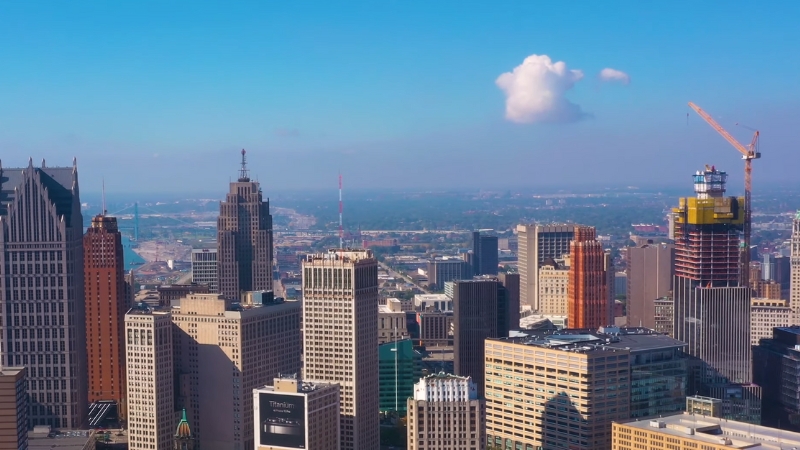
- Homicide Rate: 37 per 100,000
- Population: Around 670,000
Detroit recorded its lowest homicide total since 1965, with 203 murders. That drop is linked to expanded community outreach and crime-prevention programs. Yet, residents still live with high levels of violent crime.
The long battle with poverty, vacant properties, and unemployment has kept neighborhoods vulnerable. Police response times vary drastically, especially in high-risk zones like Brightmoor and Seven Mile.
New Orleans, Louisiana
#NOPD Announces Preliminary Crime Statistics for April 6-12, 2025 https://t.co/sV8Gjr8pQK pic.twitter.com/Goe1G7auj7
— New Orleans Police Department (@NOPDNews) April 14, 2025
- Homicide Rate: 30 per 100,000
- Population: Around 390,000
New Orleans shows some progress in reducing gun violence, with reports noting fewer firearm-related arrests and seizures early in 2025. Despite this, areas like Central City and New Orleans East continue to face regular violence.
Drug networks and gang rivalries remain deeply embedded. Community activists have warned that reduced police presence in high-crime areas could lead to future surges. Trust between the city’s residents and its institutions remains fragile.
Other Cities Around the World Where Violence Controls the Streets
Outside Latin America and South Africa, a few other urban zones also rank among the highest for murder rates. These cities stretch across the Caribbean, Central America, the Middle East, and South Asia.
In every one of them, murder is not random. It is organized, deliberate, and driven by power struggles, collapsed institutions, or total absence of security control.
Tegucigalpa, Honduras
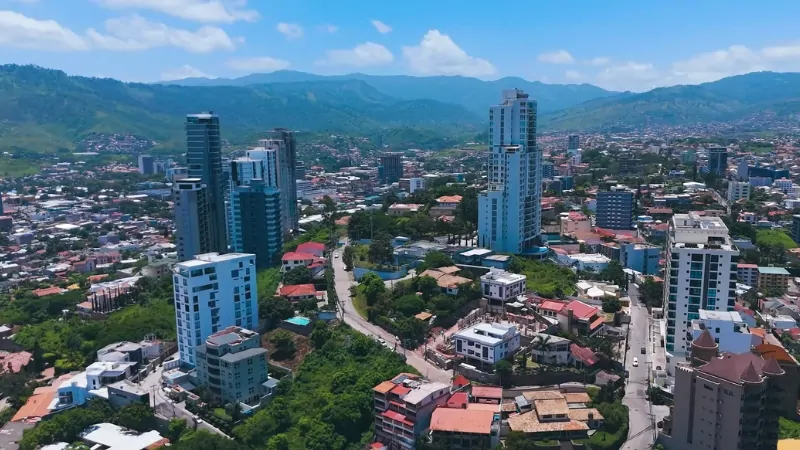
- Homicide Rate: 102.2 per 100,000
- Population: Around 1,326,000
Tegucigalpa shows why capital cities are not always safe zones. Murder rates continue to rise, driven by youth gang recruitment, drug corridors, and weapon proliferation.
Tegucigalpa continues to struggle with gang violence, especially in neighborhoods like La Kennedy. In April 2023, two young men were shot and killed while sitting near a soccer field in the Kennedy district. According to local reports, the attackers approached on a motorcycle and opened fire without warning. One victim died instantly, and the second died shortly after at the hospital.
Gangs control bus lines, neighborhoods, and even water supply routes in the hills. Police openly admit they do not have the capacity to intervene in many areas. Residents speak of invisible borders they cannot cross.
Kingston, Jamaica
- Homicide Rate: 54.46 per 100,000
- Population: Around 1,180,771
Kingston remains the epicenter of Jamaica’s violence. Despite its cultural status, the city has been fractured by decades of gang rule. In neighborhoods like Tivoli Gardens and Mountain View, gunfire is a nightly threat.
In early 2025, a series of politically linked killings brought the army into West Kingston. Police raids trigger resistance, and witnesses stay silent. Even locals avoid certain areas. Foreign travel advisories regularly list Kingston as high-risk.
Guatemala City, Guatemala
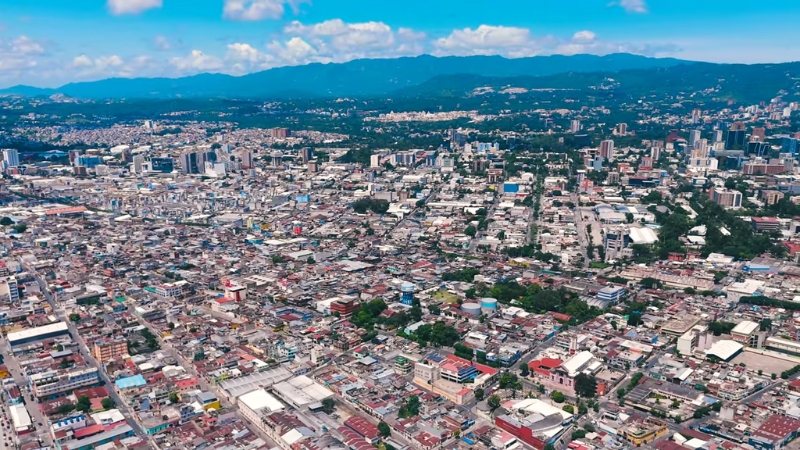
- Homicide Rate: 47.80 per 100,000
- Population: Around 1 million
Guatemala City is marked by extortion, contract killings, and territorial disputes between maras. In zones like El Mezquital and Villa Nueva, public buses are regularly targeted with grenades or burned for unpaid protection fees.
In 2024, multiple journalists fled the country due to criminal charges and intimidation linked to their investigations into political corruption and organized crime.
Port-au-Prince, Haiti
- Homicide Rate: 40.00+ per 100,000 (official reporting varies)
- Population: Around 1 million (urban estimate)
Port-au-Prince no longer has functioning law enforcement. Armed groups control zones, block roads, and openly battle police and each other.
The national police have abandoned several stations. Schools are closed in gang-dominated neighborhoods. Residents in districts like Martissant and Carrefour live under curfews set by criminals—not the government.
San Juan, Puerto Rico
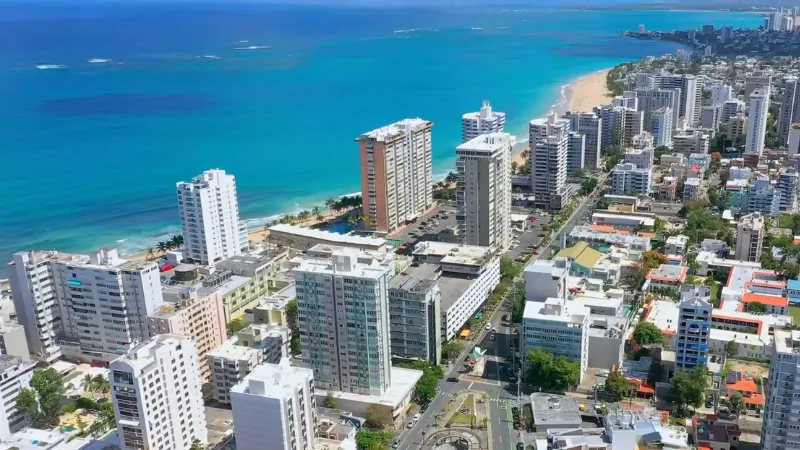
- Homicide Rate: 37.68 per 100,000
- Population: Around 318,441
San Juan stands as the most dangerous city in the Caribbean. While tourist areas stay heavily policed, violence spreads through residential zones. Shootings, drug conflicts, and neighborhood wars drive the murder rate.
Areas like La Perla and Río Piedras have long struggled with gang activity. Residents live in constant fear, with many refusing to report crimes.
Methodology
Information in this report comes from a mix of international crime databases, local news reports, and government records released between 2023 and early 2025. Cities were ranked based on reported homicide rates per 100,000 people.
Data was checked across different sources to confirm consistency and reflect the most recent updates. Each city listed has been identified in at least one major global or regional ranking for violent crime during that period.
Key sources include World Population Review, which publishes yearly city-level crime statistics, and InSight Crime, which tracks organized criminal networks and violence across Latin America. Additional figures were supported by Statista, HurfPost Brasil, and Numbeo, along with local media such as El Universal, Milenio, Jamaica Gleaner, and the Haitian Times.
In areas where official crime reports are limited or delayed, such as Caracas and Port-au-Prince, reliable estimates were drawn from non-government observers and human rights organizations. Only cities with repeated patterns of deadly violence and clear documentation were included.
Bottom Line
The cities listed in this report represent some of the highest homicide rates recorded between 2023 and 2025. Each location faces different causes—cartel violence, gang control, political instability, poverty, or weak law enforcement—but all share a common reality of ongoing, often unchecked, violence.
The data reflects publicly reported figures and documented incidents across multiple regions. While exact numbers may vary by source or reporting method, the pattern remains clear: many urban centers across the world continue to face serious public safety challenges.
Homicide rates in several of these cities remain at crisis levels and show no sign of large-scale improvement.
Related Posts:
- Top 5 Most Dangerous Intersections in Chicago by Crash Data
- The Yuxi Circle - The World’s Most Densely Populated Area
- Valencia Spain Crime Rate 2025 - Trends and Analysis
- Is Mallorca Safe to Travel To 2025? Facts About…
- Fewer Babies, Older Populations - How the U.S. and…
- What Is the Lowest Currency in The World 2025?…


